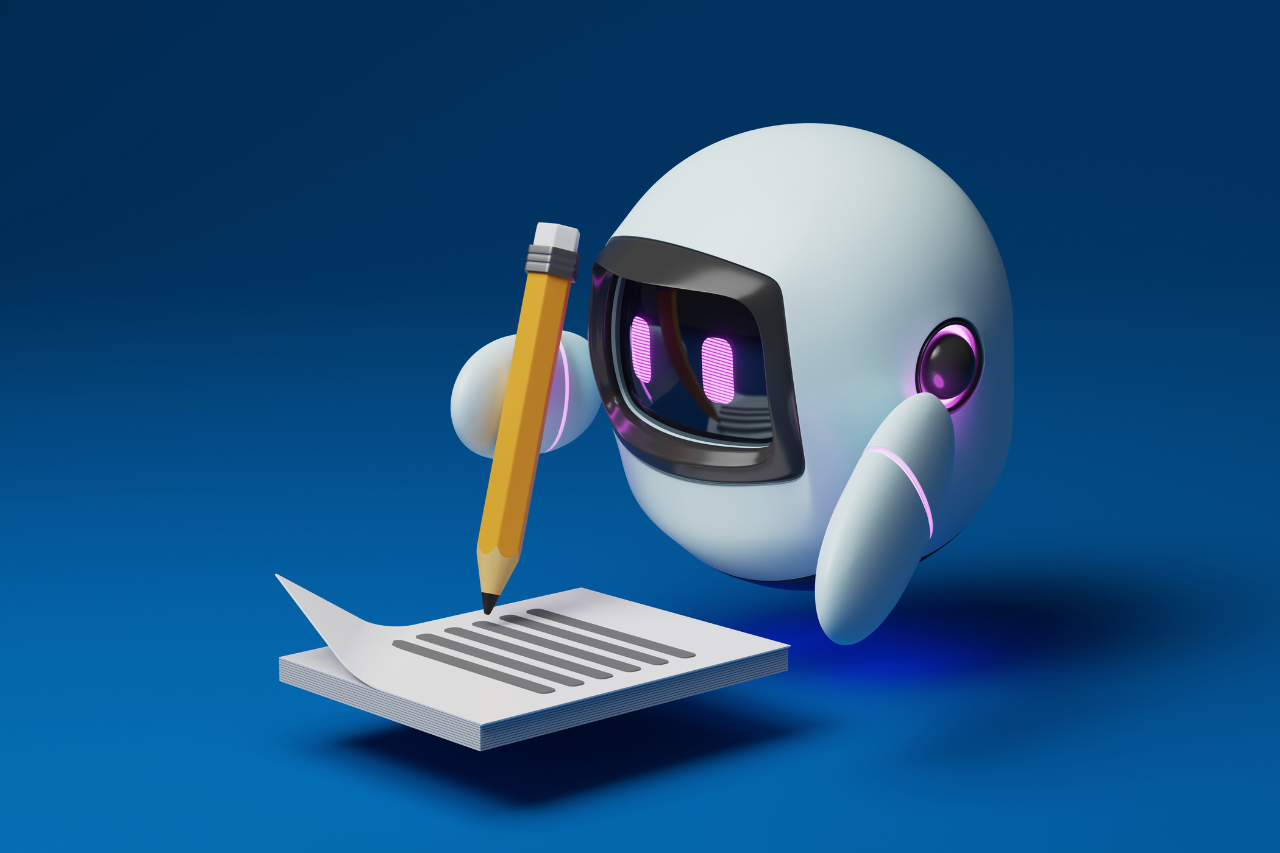
AI’s Quiet Revolution: Subtle Shifts in Customer Service Dynamics – How AI Is Reshaping the Way Businesses Engage with Customers
Picture this: you’re browsing through an online store late at night, searching for that perfect pair of shoes. Suddenly, a chat box pops up in the corner of your screen, asking if you need any assistance. But here’s the catch – it’s not a human behind those words; instead, it’s an intelligent computer program powered by Artificial Intelligence (AI).
Intrigued? This is just a glimpse into the revolutionary world of AI, which has silently woven its web into the realms of customer service, transforming our shopping experiences in ways we may not even realize. The chat box, an AI-powered chatbot, is just one of the myriad ways in which AI impacts our daily transactions and interactions with businesses.
Let’s dive into the world of AI and see how it’s making a big difference in customer service. Think of AI not just as a helper, but as a leader in the customer service sector. It’s changing the way we talk to businesses and reshaping the modern corporate scene. Welcome to the era of the Quiet Revolution, where AI isn’t just a tool, but a game-changer in how businesses interact with us.
Historical Perspective
Before the widespread implementation of AI, customer service largely depended on human interaction. Call centers dominated the industry, with operators manually resolving queries, leading to occasional inconsistencies and varied customer experiences. Wait times were often unpredictable, and resolutions were solely dependent on the representative’s knowledge and skills.
When AI first came out in the late 20th century and early 21st century, it promised to make customer service more efficient and scalable. Tech giants and e-commerce sites were among the first to look into chatbots and automatic voice systems. These early adopters used AI to offer support 24 hours a day, seven days a week, by answering commonly asked questions instantly and making operations run more smoothly.
However, the introduction of AI wasn’t without its teething problems. Initial iterations of AI tools often lacked the sophistication to understand complex queries, leading to customer frustration.
Additionally, there was resistance from traditionalists fearing job losses. But, as the technology evolved, many businesses found the right balance between human and AI-powered services. Companies like IBM with Watson and Amazon with Alexa showcased the power of well-integrated AI, changing the way businesses approached customer service and setting the bar for success in the domain.
The Quiet Revolution: Defining The Subtle Shifts
AI’s infiltration into various industries has been discreet but profound. It’s estimated that 37% of organizations have implemented some form of AI, a 270% increase over the past four years. From healthcare to finance, its invisible hands are reshaping operations, often without the end-user noticing.
Today, an average user might converse with AI more often than they realize. Approximately 85% of customer interactions are expected to be managed without human involvement by 2025. This shift is evident in daily tasks, from seeking assistance via chatbots on websites to asking virtual assistants like Siri or Alexa for weather updates.
Starbucks, with its AI-driven “Deep Brew” initiative, offers personalized ordering recommendations, improving the customer experience. Similarly, Spotify’s “Discover Weekly” playlist, curated using AI, has become a hit, with 40% of its users finding and engaging with this content. Such examples underscore that the most impactful AI integrations are often those that enhance the user experience without drawing attention to their mechanized origins.
Technological Developments Fueling The Shift
Central to the advancement of AI in customer service is the tandem of Machine Learning (ML) and Natural Language Processing (NLP). These technologies allow systems to not just understand but also learn from human language. ML algorithms adapt and improve over time, capturing subtleties in customer preferences and behaviors. On the other hand, NLP ensures that machines comprehend and respond to user queries in a coherent, human-like manner.
Beyond mere interaction, the power of AI lies in its predictive capacities. Leveraging vast amounts of data, AI systems use analytics to spot trends and preferences. Predictive models can forecast customer needs even before they explicitly state them.
Take the online retail giant, Amazon, as an example. Its AI-driven recommendation engine doesn’t just suggest products based on your recent searches. It analyzes data from your purchase history, items in your shopping cart, items you’ve rated and liked, and what other customers have viewed or purchased. It’s through this deep learning and predictive analytics that Amazon curates a personalized shopping experience for each user, demonstrating the impactful ways AI can enhance customer engagement and satisfaction.
With great power comes great responsibility.
As AI systems delve deeper into personal data, concerns about security and privacy surge. Regulations like GDPR in Europe and CCPA in California emphasize the protection of user data. It’s crucial for businesses to ensure that their AI-driven services not only comply with these laws but also maintain the trust of their customers. Transparent data handling and robust security protocols have become non-negotiable elements for any AI integration in the realm of customer service.
Practical Applications Of AI In Customer Service
24/7 Availability
Customers now expect instantaneous service around the clock in today’s fast-paced global economy. This unending requirement is easily satisfied by AI. Customer service is available 24/7/365 thanks to chatbots and AI-powered virtual assistants.
Whether a customer has a question at 3 in the morning in London or 5 in the evening in Sydney, they will receive a prompt response. Businesses may gain trust and credibility with customers all over the world by providing assistance at all hours of the day and night.
Personalization
Modern consumers seek more than just transactional interactions; they yearn for personalized experiences. AI shines in this domain. By analyzing intricate patterns in customer behaviors, purchase histories, and browsing data, AI systems craft tailored recommendations and responses.
As discussed, take Spotify, for instance, whose AI-backed algorithms create weekly personalized playlists for each of its users. Such tailored experiences transform routine interactions into memorable engagements, fostering brand loyalty and enhancing user satisfaction.
Scalability and Efficiency
Traditional customer service models often grapple with fluctuating volumes of inquiries, leading to longer wait times or inconsistent service quality. AI-driven platforms, on the other hand, can handle thousands of simultaneous queries without a hitch. For businesses, this means being able to cater to a growing user base without proportionally increasing operational costs.
Furthermore, the consistency in quality, even at peak times, ensures that every customer feels valued and attended to, driving overall service excellence.
Unveiling The Impacts: Business And Consumer Dimensions
For Businesses
Financially, the automation of routine tasks and queries has led to significant cost savings, subsequently boosting ROI. Efficiency has also skyrocketed; with AI handling massive query volumes, the speed and accuracy of responses have greatly improved.
The result? Enhanced customer satisfaction. A study by MIT Technology Review found that 90% of companies report faster complaint resolution with AI, and businesses utilizing AI-driven support systems have seen a surge in positive customer feedback and loyalty.
For Consumers
From the consumer perspective, AI in customer service is synonymous with convenience. The omnipresence of chatbots ensures uninterrupted interactions. AI’s predictive capabilities offer swift problem resolution, often preempting issues before they escalate.
Moreover, the era of one-size-fits-all solutions is waning. Consumers now enjoy experiences that are tailor-made for them, thanks to data-driven insights that cater to their unique preferences and behaviors. The outcome is a more engaged, satisfied, and loyal customer base
Navigating the Human vs. Machine Balance
However, the proliferation of AI in customer service isn’t without its dilemmas. Striking the right balance between human touch and machine efficiency is paramount. While AI can process information at lightning speed, human agents bring emotional intelligence to the table, which is essential for complex or sensitive situations.
Businesses must ensure that while leveraging AI’s prowess, they don’t compromise on the genuine, empathetic, and ethical engagements that consumers value.
Challenges And Criticism
While AI offers unprecedented benefits, concerns about data privacy are rampant. With AI systems often requiring vast amounts of user data, ensuring its ethical use is paramount. Reflecting this, a global survey of adults in January 2021 revealed that two-thirds of participants expressed concerns about tech companies wielding excessive control over their personal data.
As AI systems take over tasks traditionally performed by humans, fears of job losses intensify. The challenge lies not only in the potential displacement but also in reskilling the workforce to thrive in an AI-dominated landscape.
The growth of AI could potentially widen digital gaps. This means that depending on where you live, how much you earn, or your level of education, you might have limited access to the newest AI-powered services. It’s really important to make sure that the perks of using AI are shared fairly and that we don’t accidentally leave any community behind. Keeping this in mind is crucial to using AI ethically and effectively.
Future Projections
The trajectory of AI indicates a move towards more subtle, behind-the-scenes integration, enhancing the user experience without overtly revealing its presence. But many of these interactions will be so seamless that customers may not even realize they’re engaging with AI.
As we stand on the brink of technological marvels like quantum computing, the capabilities of AI are set to undergo exponential growth. Advanced NLP will further blur the lines between human and machine interactions.
The expansive growth of AI will reshape economic landscapes. Businesses will have to adapt rapidly, ensuring they harness the potential of AI while maintaining trust. For customers, the evolution promises enhanced experiences. Economically, while some sectors might face disruption, new avenues and opportunities will emerge, driving growth and innovation
Final Thoughts
The journey of AI in customer service has been transformative. From its discreet inception to its current ubiquitous presence, AI has redefined customer-business interactions. While enhancing efficiency and personalization, it’s also brought to light concerns around data privacy, job displacement, and the digital divide.
In this whirlwind of change, it’s imperative to embrace AI’s potential while treading with caution. As we harness the capabilities of AI, we must not lose sight of the ethical and social values that ground us. The challenge lies in ensuring that this digital metamorphosis enriches our experiences without compromising our core principles.



